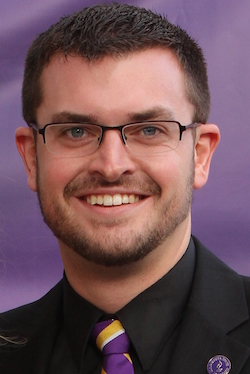
Proprietary software has helped senior living provider Ecumen to curb antibiotic use and halt viral outbreaks across 300 skilled nursing facilities. Now, the company is expanding the technology’s use to its assisted living facilities and other providers it services, it announced Friday.

The Shoreview, MN-based company began rolling out the first version of its Peerlytics Infection Management & ABX Stewardship software in 2018. The program has brought $2,000 savings on antibiotic drugs per 100-bed facility (estimated from the lowest-cost antibiotic), according to Brett Anderson, RN, chief ecosystem and operations officer. And it has helped care providers reduce the duration of time patients are on antibiotic therapy, he said.
Providers also have reported an estimated 25% and 40% reduction in staff hours spent tracking trending infections, eliminating survey deficiencies in infection control and antibiotic stewardship regulation.
The software’s use is now in the pilot phase in Ecumen assisted living communities and in three external AL communities that it serves.
“We would anticipate the same savings in the assisted living provider space,” Anderson told McKnight’s Senior Living. The software is customizable, and Ecumen also has seen interest from a memory care facility that wishes to reduce resources spent managing urinary tract infections, he noted.
Search for stewardship solutions
The importance of antibiotic stewardship has continued to grow as bacteria increasingly find ways to outwit the drugs meant to keep them in check, close observers say. Widespread use of antibiotics during the COVID-19 pandemic has contributed to a 15% spike in deaths tied to antibiotic-resistant superbugs from 2019 to 2020, the Centers for Disease Control and Prevention recently reported.
Meanwhile, long-term care facility residents are highly vulnerable to severe outcomes from such infections. And provider interest in infection management tools has grown since the advent of COVID-19, Anderson told McKnight’s.
“In senior living, this expands beyond compliance and it is about preserving resources, improving resident quality of life and in doing so, ensuring the confidence of residents and their families,” he said.
The original software, called abxtracker, was developed by two Minnesota-based senior care pharmacists. After acquiring it, Ecumen expanded the software’s capabilities to include not only antibiotic stewardship, but infection control surveillance as well. This allows clinical teams to identify infection trends and implement precautions to reduce the chance of viral transmission, Anderson said.
Preventing outbreaks
Users of the company’s Peerlytics portfolio enter data and can see infection trends show up in real time on detailed community maps. These capabilities help environmental services staff to visually demonstrate common illness trends and guide plans for future mitigation, Anderson said.
According to industry standards, inappropriate antibiotics can be reduced by 64% with the use of standardized communication tools, he said. The Peerlytics software workflow auto-generates standardized measurements of changes in a patient’s condition [SBARs] and follow-up reports, for example. Clinicians then provide the resulting patient status reports to physicians after an antibiotic has been prescribed.
“Through this we see less inappropriate antibiotics being prescribed and/or a reduction in days of therapy and/or reduce adverse events,” Anderson reported.
The software also helps to engage caregivers in identifying early signs of illness and changes in conditions in residents, and can help track staff illnesses as well. This allows nurses to provide clinical care before emergent care is required, “saving the community resources and time, while delivering high quality care and improving outcomes,” Anderson said.
Norovirus and CAUTI containment
In one example, a skilled nursing facility used the software’s mapping capabilities to track a norovirus outbreak and then contain it by implementing the use of personal protective equipment and putting isolation measures in place, he reported.
Another provider has used the software to assist care staff in successfully reducing catheter-associated urinary tract infections. The technology allowed it to identify and implement needed improvements in staff education and basic infection control measures, Anderson said.
No more spreadsheets
User experience with the software has been a far cry from that of previous methods, Anderson said. Infection preventionists, for example, now spend less behind their computers, tracking and documenting infections on a spreadsheet, he reported.
“Paper and pen tracking, or even Excel-based tracking, does not provide any actionable trending or historical review data,” Anderson said. “By being web-based, we are better able to collect infection/antibiotic information immediately, at the bedside, and use that information to generate quicker [SBAR reports]. It also allows faster interventions, and mapping technology leads to better analysis from a quality improvement standpoint,” he said.
Ecumen also has electronic health records integrations and partnerships that it predicts will improve user efficiency of the software platform.
The Peerlytics rollout builds on Ecumen’s Awakenings program, introduced in 2008 to establish standards to eliminate unnecessary antipsychotics in individuals with dementia, said Shelley Kendrick, Ecumen president and CEO, in a statement.
“We are excited to offer solutions that are created by providers … ,” she said.
Related articles:
Assisted living providers struggled with infection control during pandemic, multistate study reveals



